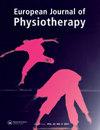New graduate physiotherapists’ perceived preparedness for clinical practice. A cross-sectional survey
IF 1.1
Q3 REHABILITATION
引用次数: 9
Abstract
Abstract Objectives The study aimed to explore new United Kingdom (UK) graduate physiotherapists’ perceived preparedness for clinical practice to provide valuable information to support curriculum development. Methods An online, mixed method cross-sectional questionnaire was used. Newly qualified UK physiotherapists completed a survey, capturing how physiotherapy degrees prepared them for practice against (1) UK proficiency standards and (2) cross-discipline physiotherapy related clinical skills. Respondents were asked for reflections of their degree course including teaching and effectiveness. Data were converted into proportions with a 95% confidence interval. Likert-scale questions were treated as numeric variables with the mean and standard deviation (SD) calculated for combined responses. Thematic analysis reported patterns of data extracted from open-ended questions. Results Of a total of 376 respondents, 365 were included in data analysis. Overall respondents perceived that courses prepared them ‘well’ against 12 of the 15 standards, on a Likert scale of 1–5. Respondents reported that perceived competence was ‘indifferent’ for manual therapy skills (mean 3.14 ± SD 1.13), red flag (3.45 ± 1.11) and clinical flag management (2.92 ± 1.16). Exercise prescription (2.42 ± 1.35), psychosocial skills (2.27 ± 1.23) and patient management (2.41 ± 1.12) were areas identified for further teaching focus. Placements were the preferred teaching method most applicable to practice followed by practical seminars. Conclusion Respondents felt sufficiently prepared for practice against UK proficiency standards but not physiotherapy related clinical skills. Areas for curricula development included exercise prescription, psychology and pain management.新毕业物理治疗师对临床实践的感知准备。横断面调查
摘要目的本研究旨在探讨英国新毕业物理治疗师对临床实践的感知准备情况,为课程开发提供有价值的信息。方法采用在线混合式横断面调查问卷。新获得资格的英国理疗师完成了一项调查,了解了理疗师学位是如何根据(1)英国熟练程度标准和(2)跨学科理疗师相关临床技能为他们的实践做好准备的。受访者被要求对他们的学位课程进行反思,包括教学和效果。数据被转换成具有95%置信区间的比例。Likert量表问题被视为数字变量,计算出组合回答的平均值和标准差(SD)。专题分析报告了从开放式问题中提取的数据模式。结果在376名受访者中,365人被纳入数据分析。总体而言,受访者认为课程为他们准备得“很好”,符合15项标准中的12项,Likert量表为1-5。受访者报告称,感知能力对手动治疗技能“漠不关心”(平均3.14 ± SD 1.13),红旗(3.45 ± 1.11)和临床标志管理(2.92 ± 1.16).运动处方(2.42 ± 1.35),心理社会技能(2.27 ± 1.23)和患者管理(2.41 ± 1.12)是确定的进一步教学重点领域。实习是最适合实践的首选教学方法,其次是实践研讨会。结论被调查者觉得自己已经做好了充分的准备,可以按照英国的熟练程度标准进行练习,但不具备物理治疗相关的临床技能。课程开发领域包括运动处方、心理学和疼痛管理。
本文章由计算机程序翻译,如有差异,请以英文原文为准。
求助全文
约1分钟内获得全文
求助全文

 求助内容:
求助内容: 应助结果提醒方式:
应助结果提醒方式:


